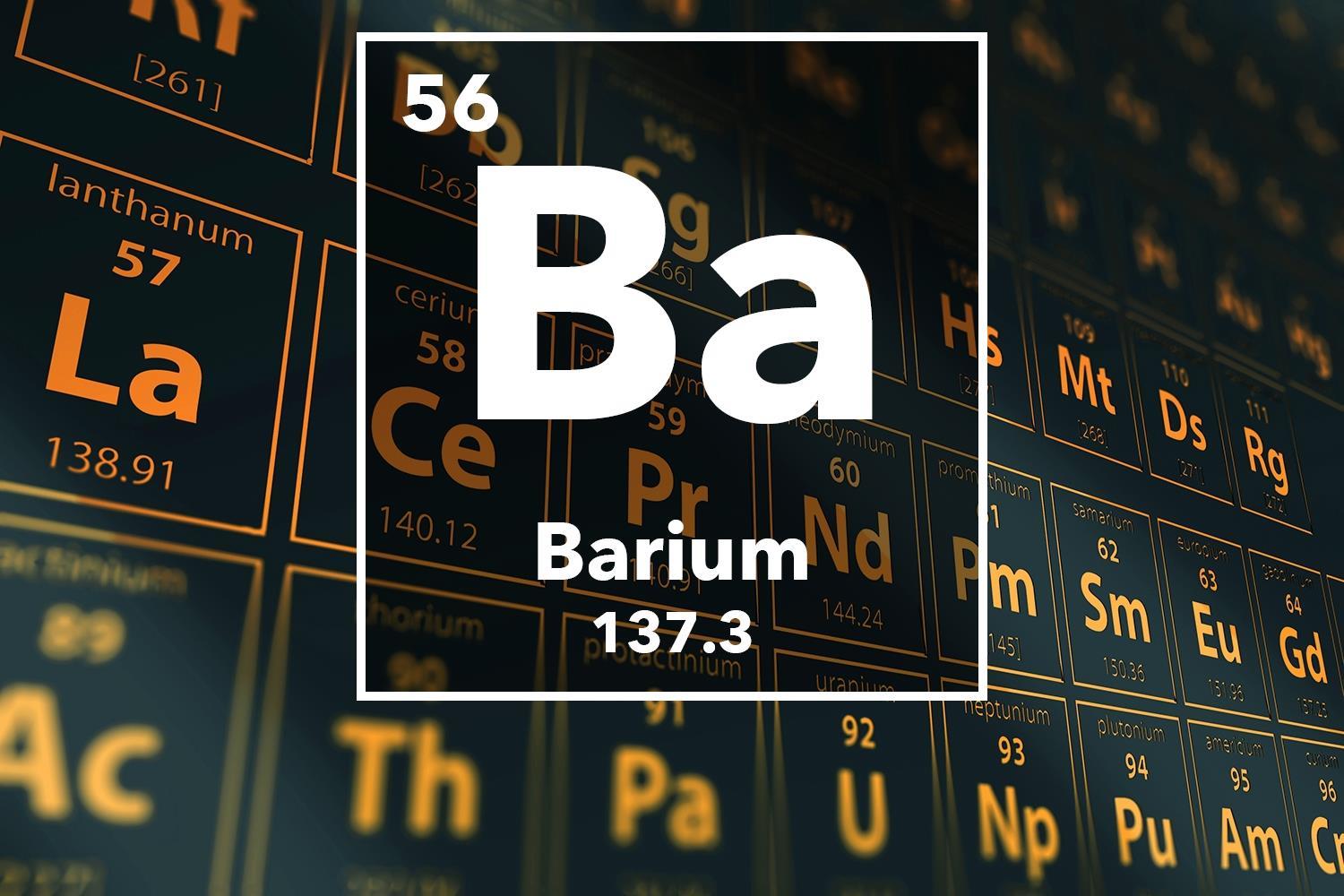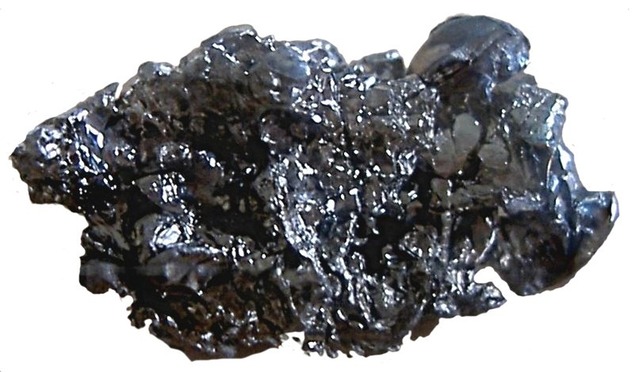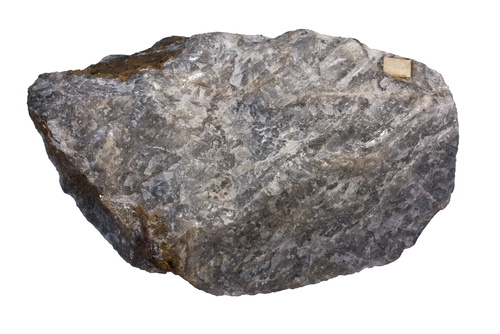Identity.
Barium, element number 56 on the periodic table with the symbol Ba,
holds a unique identity. Although highly reactive and never found free
in nature, it masquerades within various minerals like barite and
witherite. Its defining characteristic lies in its ability to block
X-rays, making it invaluable for medical imaging as the barium meal
and shielding workers in hazardous environments. While some compounds
like barium sulfate boast non-toxic applications, others hold hidden
dangers due to their water solubility and release of harmful barium
ions. From illuminating our insides to adding weight to paints,
barium's identity is as diverse as its applications, demanding respect
for its hidden power.
Atomic Structure:
Barium atoms have 56 electrons and the shell structure is 2.8. 18.18.
8.2. The ground state electron configuration of ground state gaseous
neutral barium is [Xe]
History.
The story of barium begins not with the element itself, but with its
glowing companion. In the early 1600s, near Bologna, Italy, Vincenzo
Casciarolo stumbled upon curious pebbles – "Bologna stones" – that
shone after heating. These mesmerizing minerals, later identified as
barite (barium sulfate), sparked scientific curiosity.
Carl Wilhelm Scheele, in the 1770s, recognized the stones
contained an unknown element he named "baryta" based on the Greek
word for "heavy." Meanwhile, William Withering discovered another
heavy mineral, witherite (barium carbonate), in England. However,
isolating the pure element proved challenging. Conventional
smelting methods failed, revealing barium's reactive nature. Enter
Humphry Davy, a pioneer of electrochemistry. In 1808, he
successfully obtained metallic barium by electrolyzing molten
barium hydroxide. This marked the element's official debut, named
"barium" after its oxide counterpart.
Beyond its historical glow, barium's journey intertwined with
diverse applications. Its X-ray blocking abilities, discovered
early on, led to its use in medical imaging and industrial
radiography. Barium compounds found their way into paints,
ceramics, and even pyrotechnics, captivating audiences with
vibrant colors
However, caution became a key theme. While barium sulfate proved safe
due to its insolubility, other compounds posed toxicity risks.
Regulations and responsible handling became crucial in navigating
barium's duality – a hidden power demanding respect. Today, barium's
story continues. Beyond its traditional uses, researchers explore its
potential in advanced batteries, superconductors, and even space
exploration. As with any powerful element, understanding its history,
properties, and risks remains vital for harnessing its potential
responsibly.
Usage.
Barium compounds, including barium sulfate, play a significant role in
various aspects of our lives, including medical applications, drilling
fluids, and fireworks. However, caution is necessary due to the
potential dangers of not all barium compounds.
-
Illuminating Our insides: Barium plays a starring role in
medical imaging. Barium sulfate, the hero of the story, forms the
base of the infamous "barium meal." This concoction, swallowed by
patients, coats the digestive tract, allowing doctors to see its
internal structures through X-rays. Barium's ability to block
X-rays while remaining safe for ingestion makes it the perfect
internal highlighter.
-
Drilling Deep with Confidence: Deep beneath the surface,
barium hides within drilling fluids used for oil and gas
exploration. Here, its high density plays a crucial role. As the
fluid circulates down the well, its weight helps control pressure
and prevent unwanted blowouts. Barium, in this hidden disguise,
ensures safe and efficient drilling operations.
-
Pyrotechnics that Dazzle (Safely): Imagine fireworks
bursting with vibrant greens and blues. Barium compounds, like
barium nitrate and chlorate, are the secret ingredients behind
these mesmerizing colors. However, caution is key. Not all barium
compounds are created equal. Only specific, carefully chosen ones
are used in pyrotechnics, ensuring the safety and brilliance of
these celebratory displays.
Some of the benefits of using hydrogen are:
-
Barium sulfate shines in X-ray imaging, helping doctors see the
digestive tract clearly. This "barium meal" aids in diagnosing and
treating various medical conditions.
-
In drilling fluids, barium's weight plays a vital role. It
controls pressure and prevents dangerous blowouts, ensuring safer
oil and gas exploration.
-
Carefully chosen barium compounds bring vibrant greens and blues
to life in fireworks displays. They offer a safe and effective way
to create stunning visuals for celebrations.
-
From adding opacity to glass and ceramics to providing weight and
corrosion resistance in paints, specific barium compounds find
diverse applications across various industries.
Sources.
Barium, the hidden gem, finds its home in various sources. The biggest
stashes lie in minerals like barite and witherite, mined across the
globe. But it doesn't stop there! Barium lurks in groundwater,
sometimes showing up in wells, and even mingles with seawater in vast
quantities. Even your dinner plate isn't safe - Brazil nuts, greens,
and seafood can harbor this surprising element. Remember, responsible
exploration is key, as we unlock the treasures of this hidden wonder.
Properties.
A Jekyll and Hyde Act: Pure barium, a soft, silvery metal,
hides a dual personality. On one hand, it's highly reactive, readily
tarnishing in air and бreacts violently with water, reacts violently
with water, hydrogen. This fiery nature prevents its free existence in
nature. But barium compounds exhibit a different side. Barium sulfate,
for example, is remarkably stable and non-toxic, making it the hero of
medical X-rays and drilling fluids.
X-Ray Heroism: Barium's ability to block X-rays is truly
heroic. Barium sulfate's dense atomic structure absorbs this
radiation, making it ideal for medical imaging. The famous "barium
meal" coats the digestive tract, allowing doctors to see its internal
structures clearly. This same property protects workers handling
X-rays in industrial settings.
A Colorful Doppelganger: While some barium compounds boast
safety like their sulfate cousin, others possess a hidden danger.
Barium compounds that dissolve in water release toxic barium ions.
These "bad apples" contribute vibrant colors to pyrotechnics and add
weight to paints, but require careful handling due to their potential
health risks. Understanding this duality is crucial for responsible
use.


